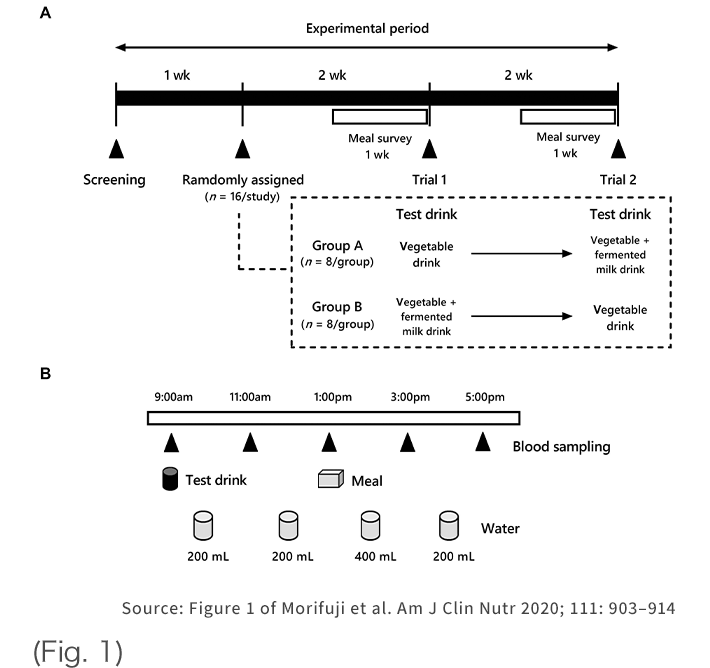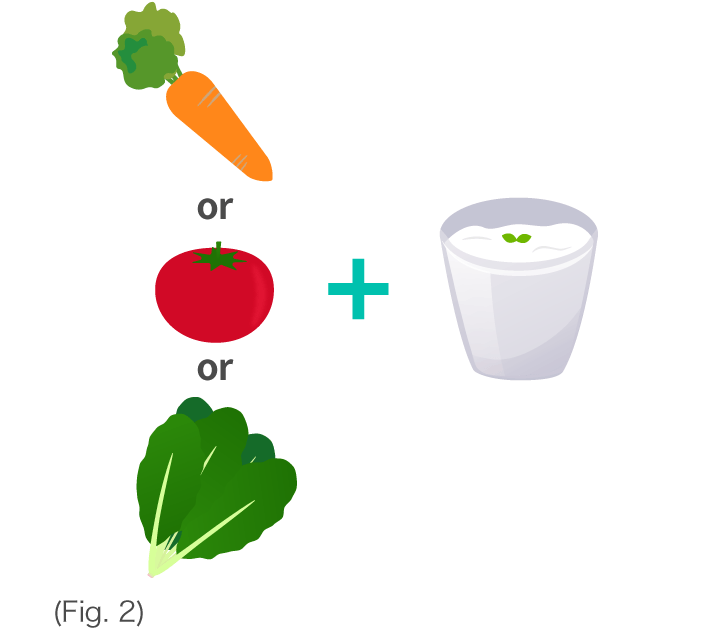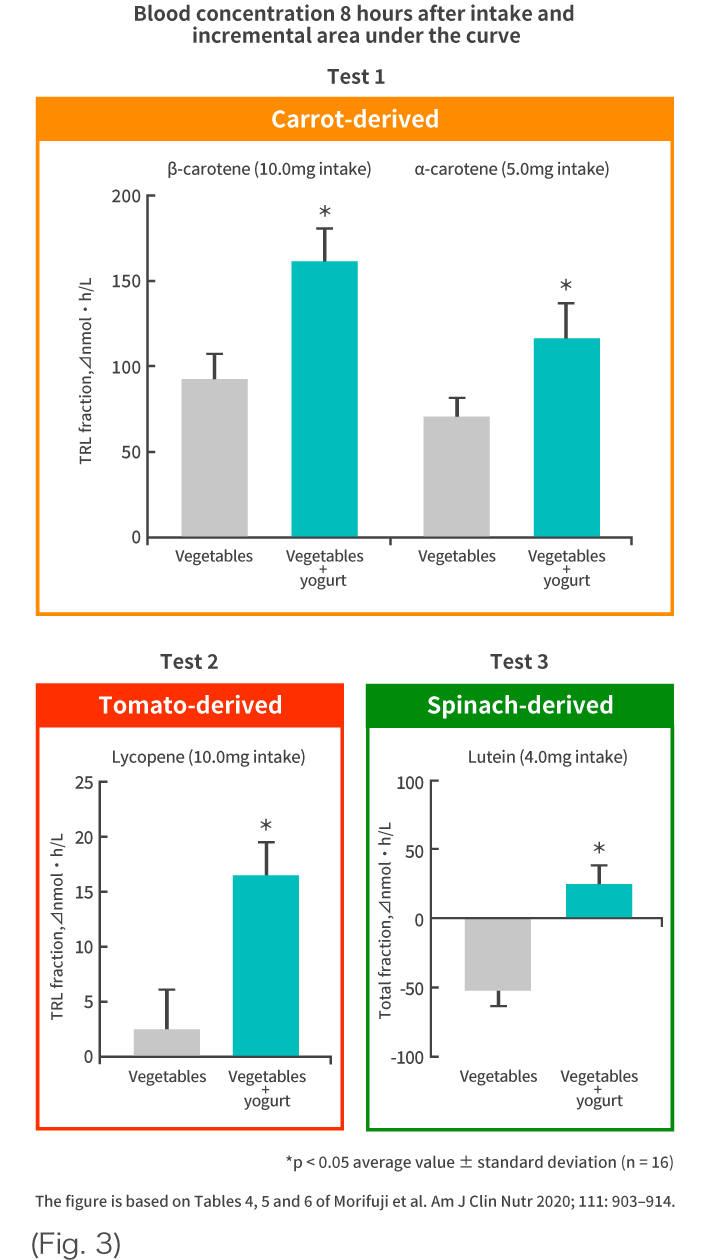
Test results on OLL1251 lactic acid bacteria and OLS3290 lactic acid bacteria
Method of testing
In a recent study, we conducted tests to elucidate the effects of yogurt on the absorption of carotenoids derived from food in healthy people. In three separate clinical trials adopting the randomized crossover test method, the participants were divided into Group A, who ate only the vegetable (Test 1: Carrot, Test 2: Tomato, Test 3: Spinach) first, then ate both vegetable and yogurt, and Group B, who ate the vegetable and yogurt first, then ate only the vegetable, to compare the blood carotenoid concentrations (Fig. 1).

The test food consisted of vegetable and yogurt (Fig. 2). The vegetables we used were carrot, tomato and spinach. As the test yogurt, we used a yogurt to which the OLL1251 strain (OLL1251 lactic acid bacteria) and OLS3290 strain (OLL3290 lactic acid bacteria), which contain high levels of EPS, were added. We also established a washout period of 2 weeks between the intake test dates.

Test results
Test 1: Carrot
β-carotene in blood plasma TRL fraction was significantly higher after intake of carrot + yogurt than intake of carrot only. In addition to β-carotene, the incremental area under the curve (iAUC) for α-carotene was significantly larger after intake of carrot + yogurt than intake of carrot only (Fig. 3).
Test 2: Tomato
The iAUC value of lycopene in blood plasma TRL fraction was significantly higher after simultaneous intake of tomato and yogurt than intake of tomato only (Fig. 3).
Test 3: Spinach
The iAUC value of lutein in blood plasma total fraction was significantly higher after simultaneous intake of spinach and yogurt than intake of spinach only (Fig. 3).

Solving the issues of society with the functions of OLL1251 lactic acid bacteria and OLS3290 lactic acid bacteria
The effect of yogurt on promoting carotenoid absorption plays an important role in ensuring that the natural health functions of carotenoids are sufficiently delivered. It is expected that this function will help solve health issues of people caused by malnutrition or insufficient nutrient absorption. For example, it may help develop measures against vitamin deficiency/insufficiency for people who go on a fat-controlled diet for treatment, and measures against oxidative stress in athletes who control fat when they train.

As described above, we will be able to improve issues such as nutritional deficiency in those who cannot have too much food intake due to various reasons and insufficient absorption of nutrients that are low in absorption rate in the first place by improving the absorption rate with the functions of lactic acid bacterium and ensuring that the nutrients are absorbed. In the future, Meiji will continue to contribute to solving issues affecting society by improving health maintenance and promotion for people through our research on lactic acid bacterium.

















